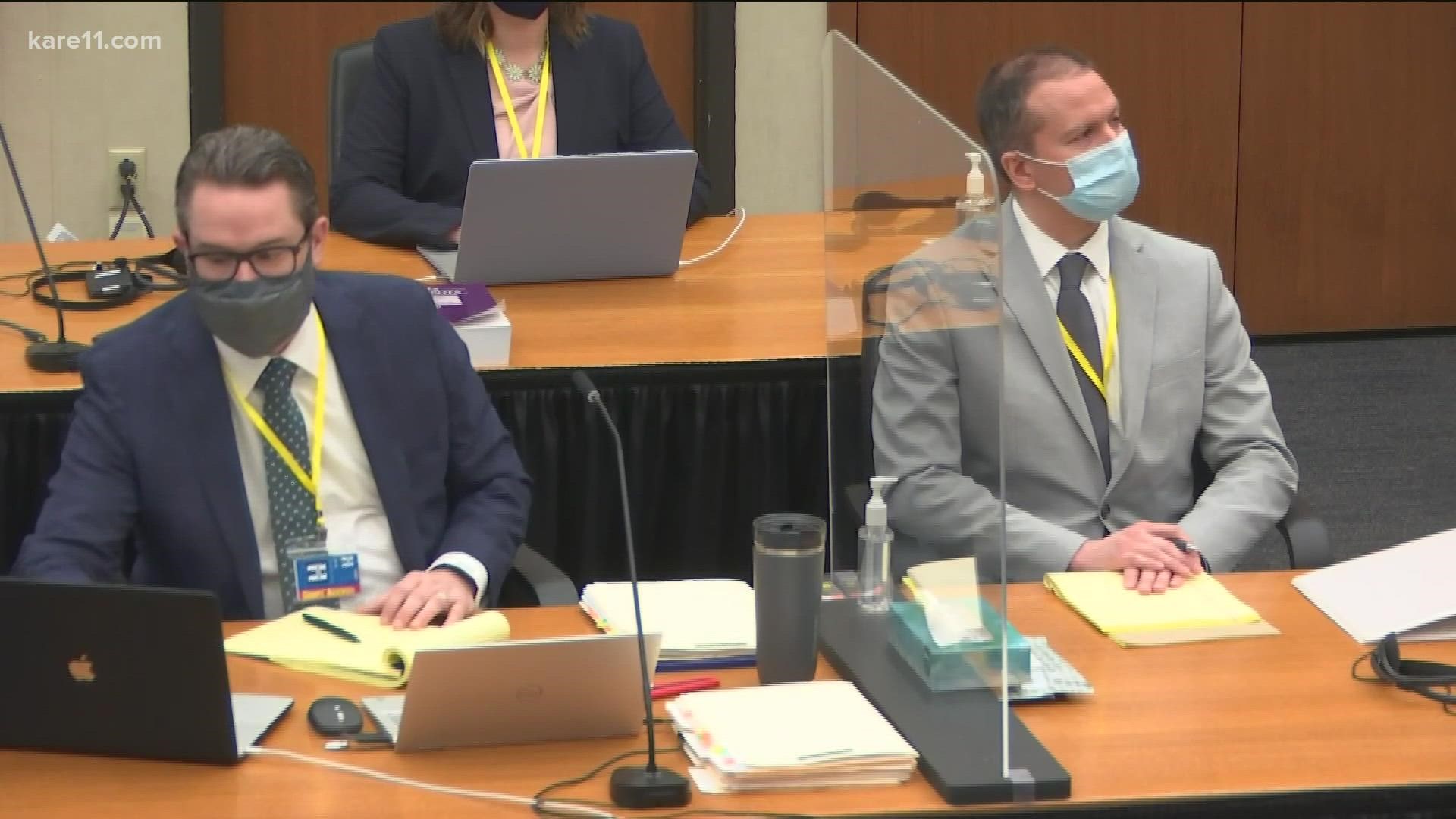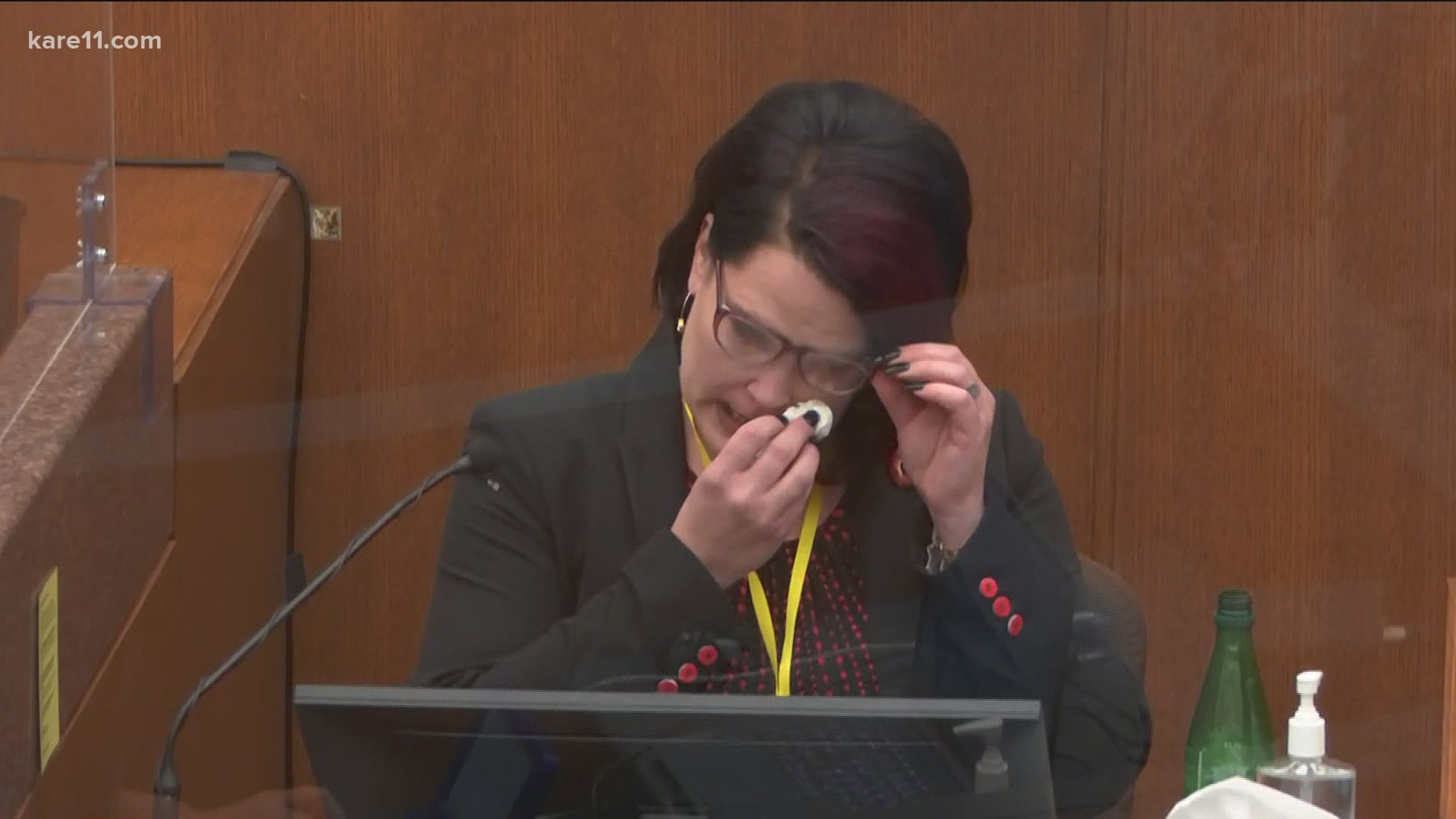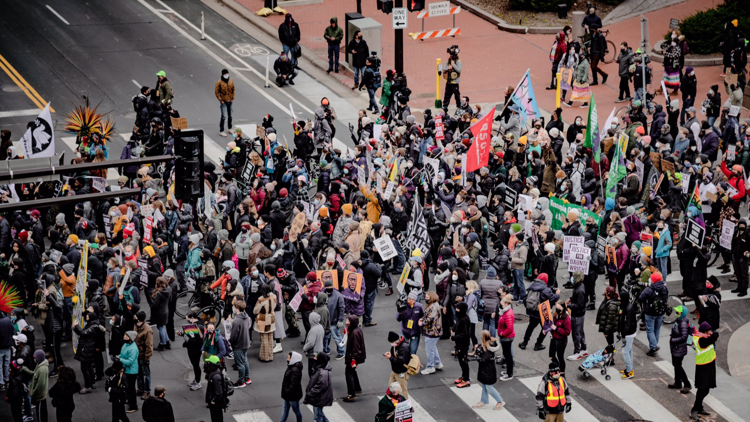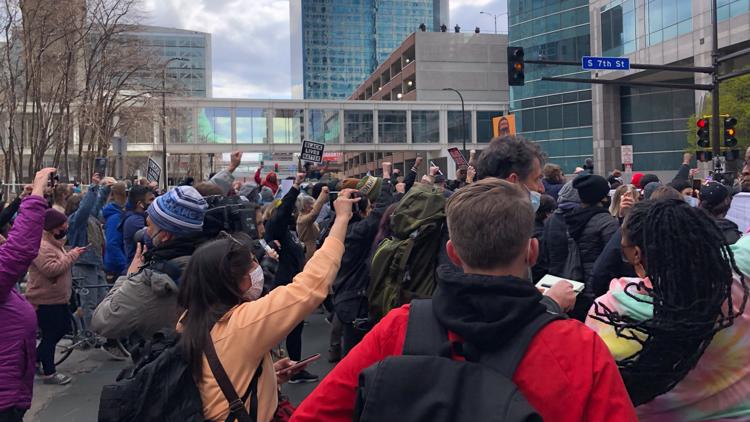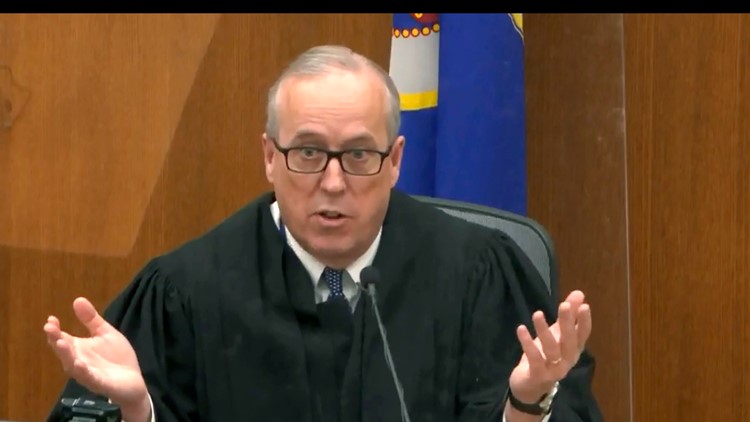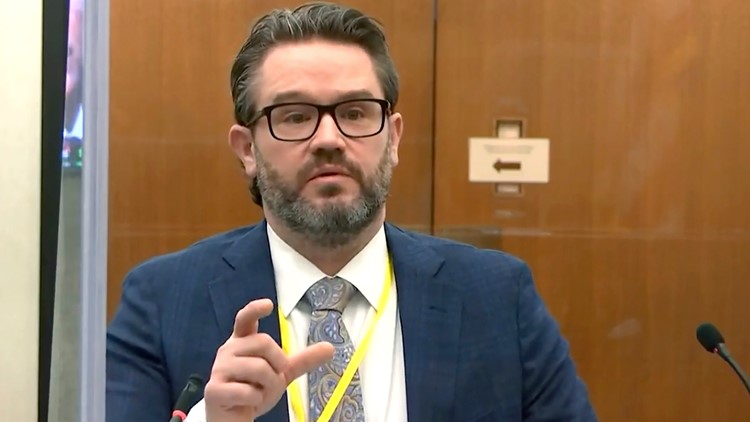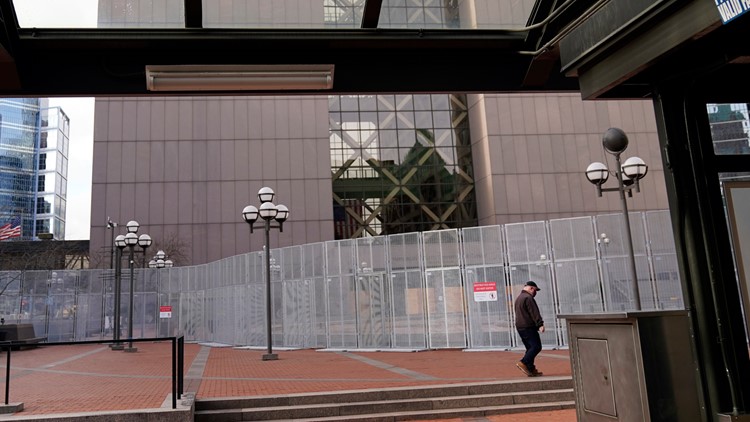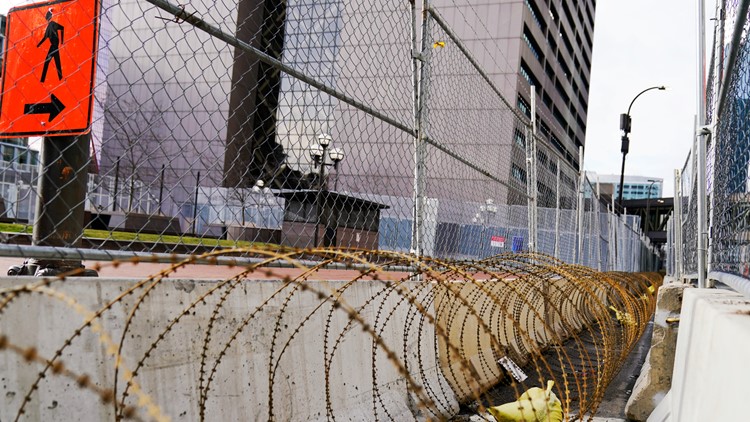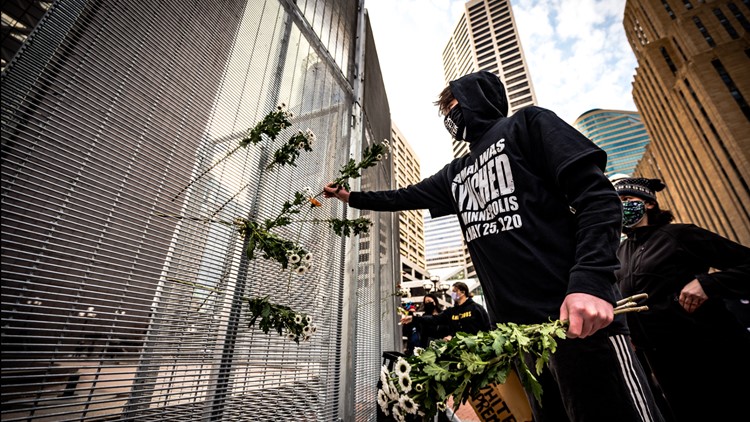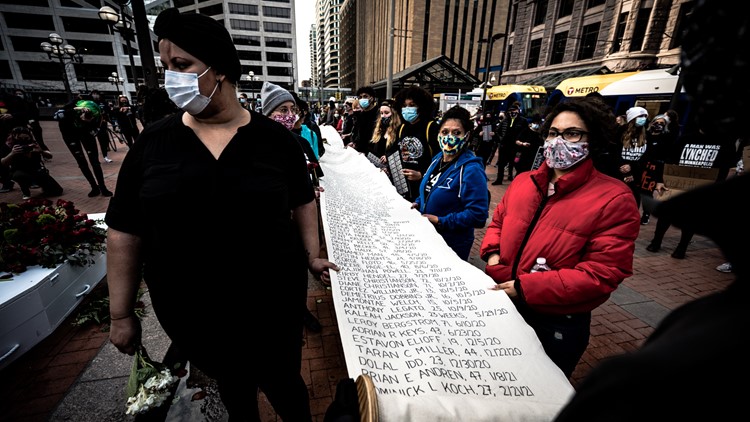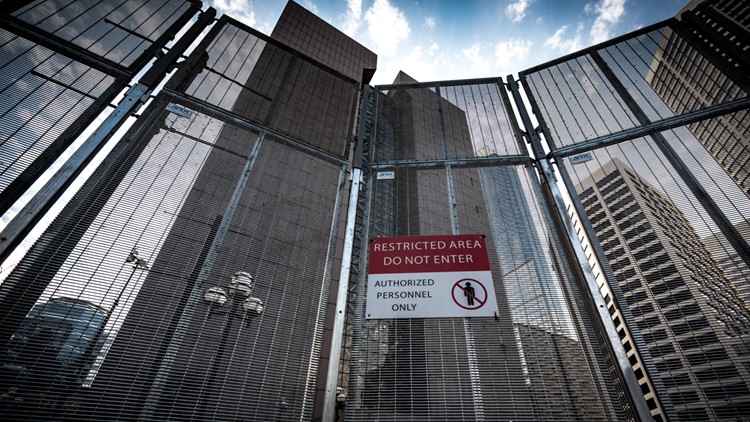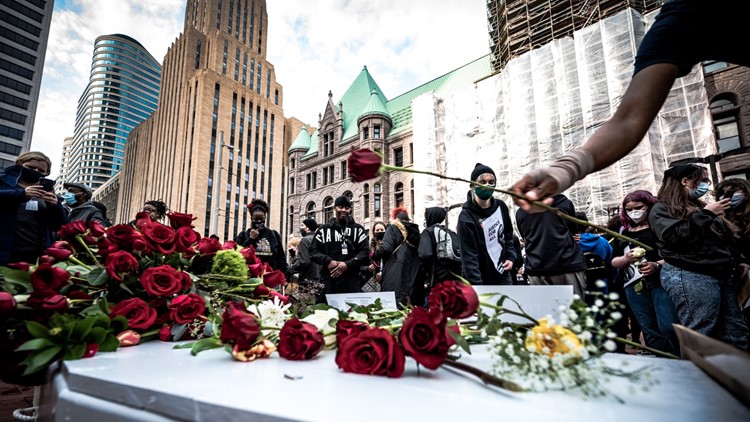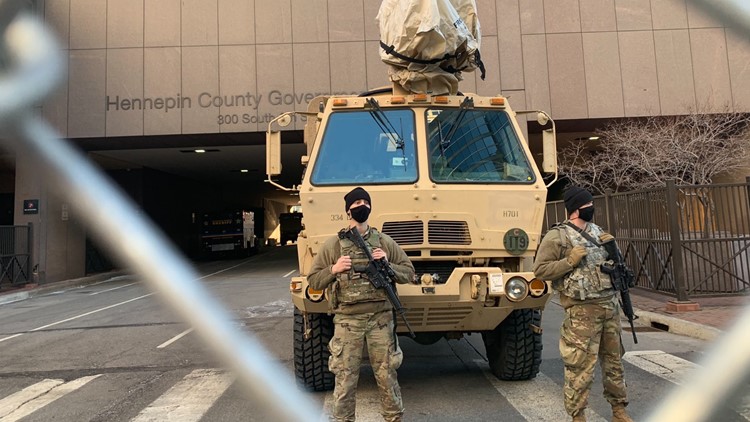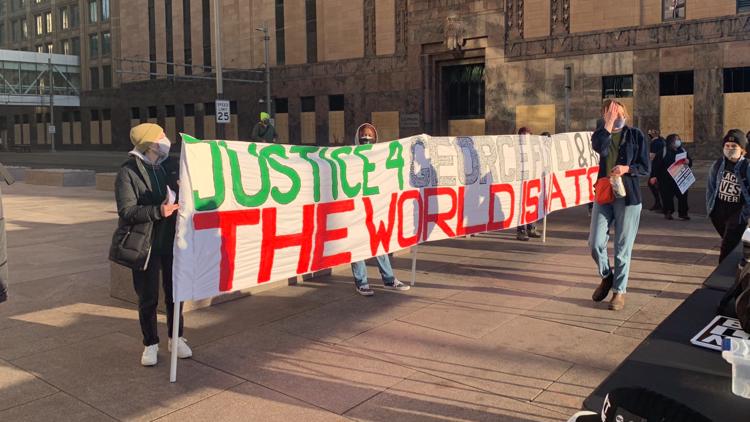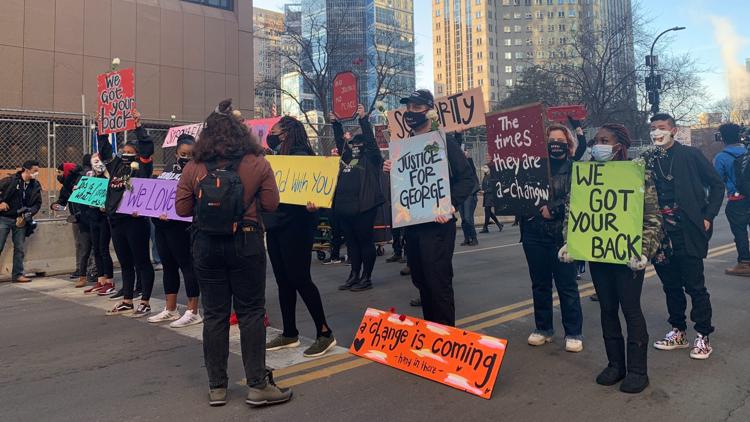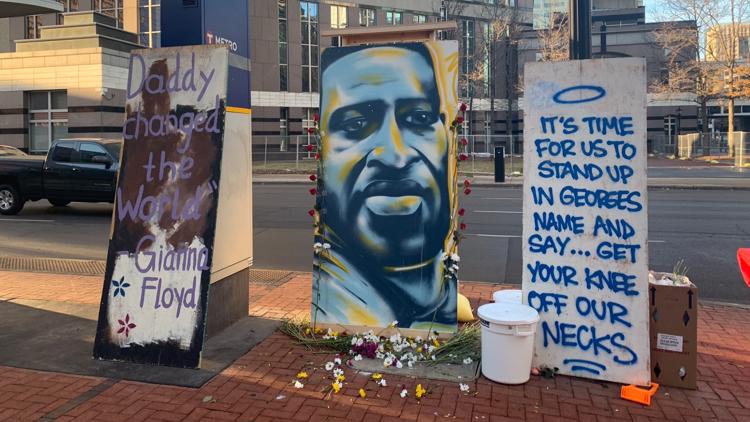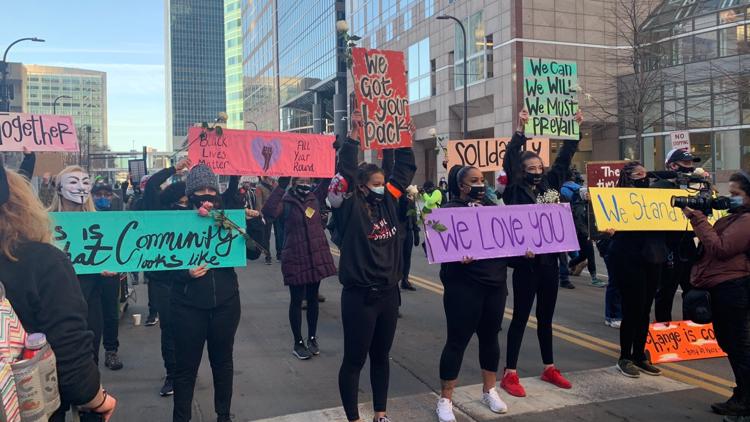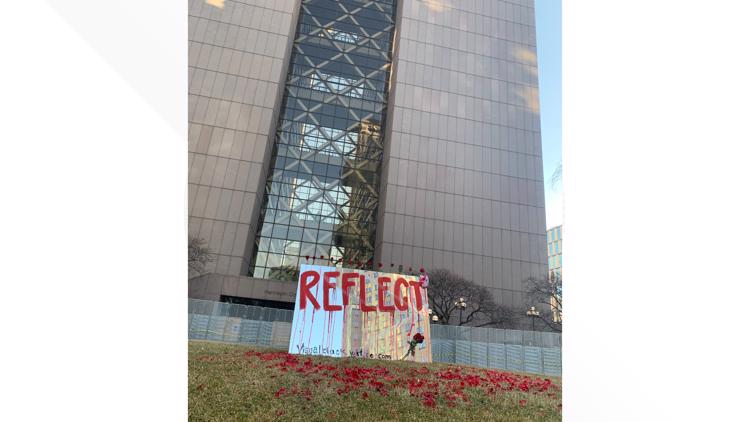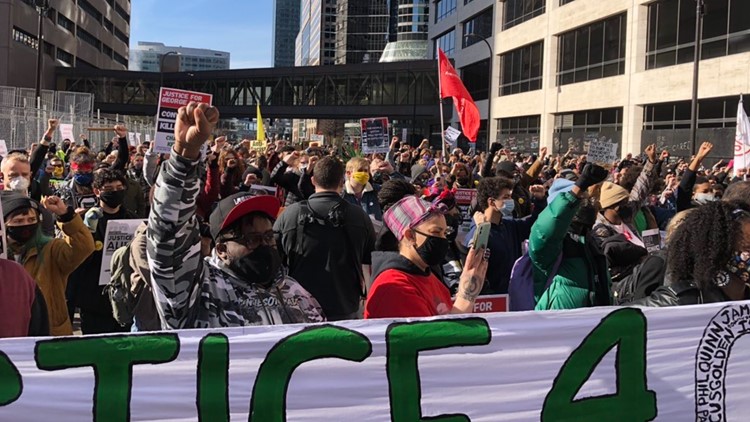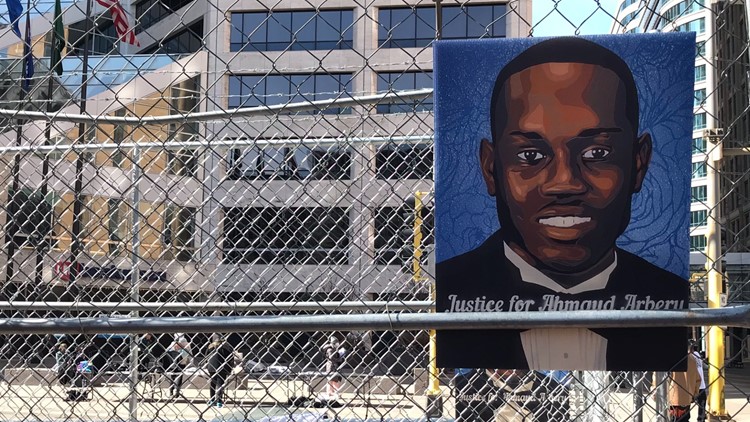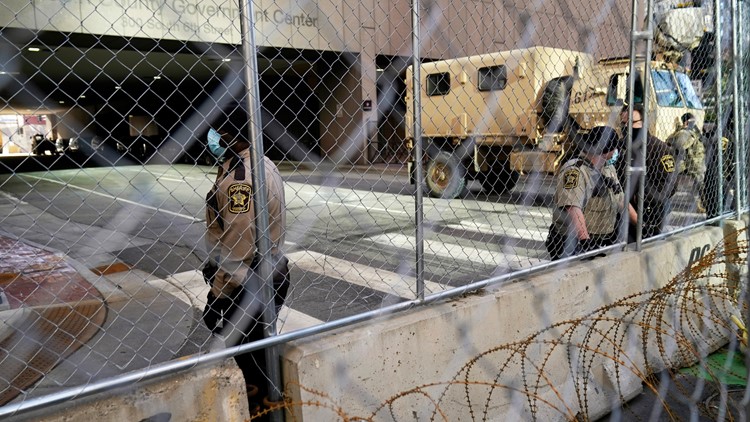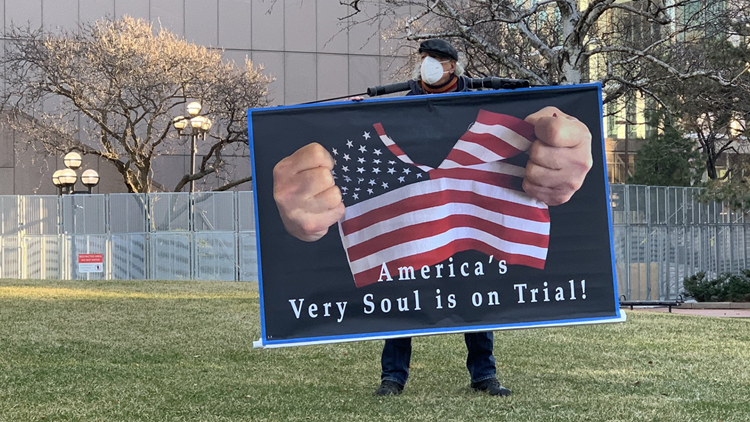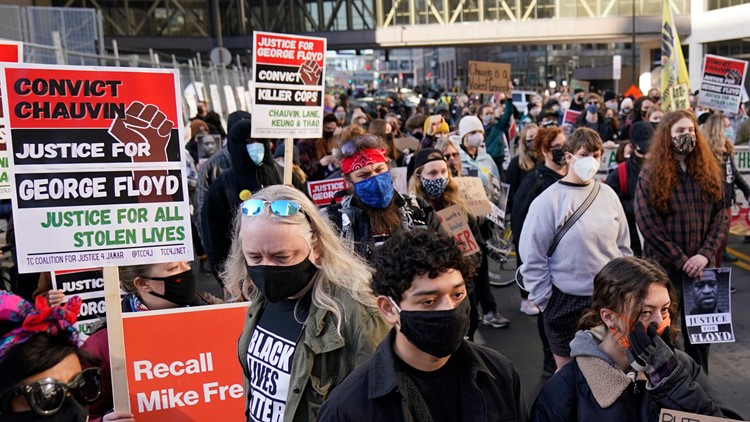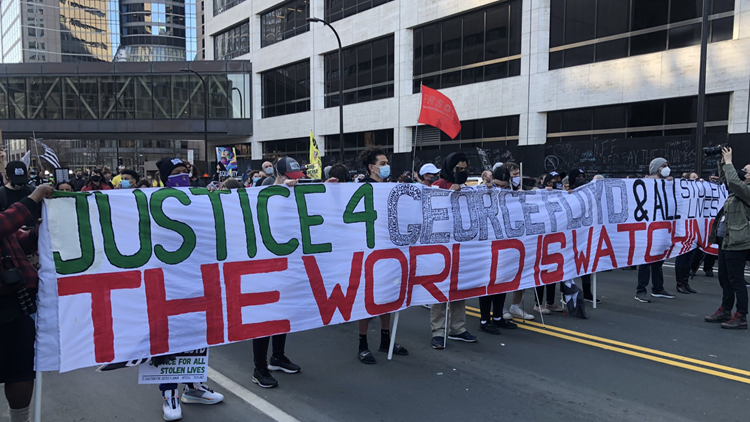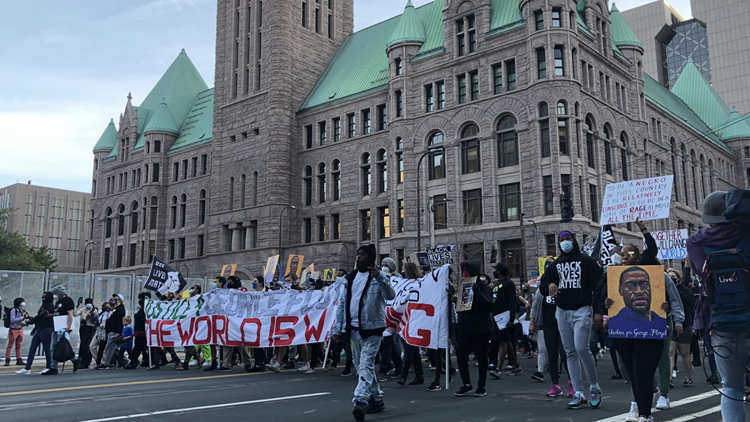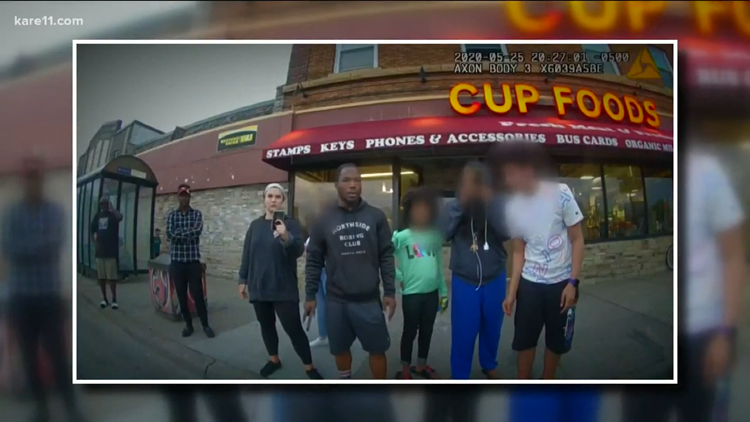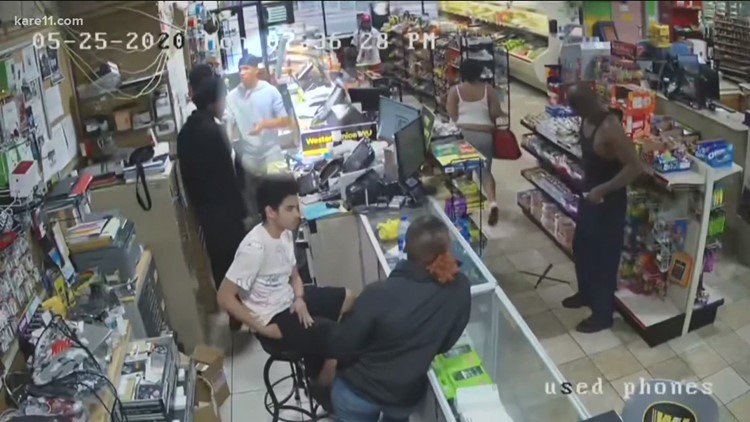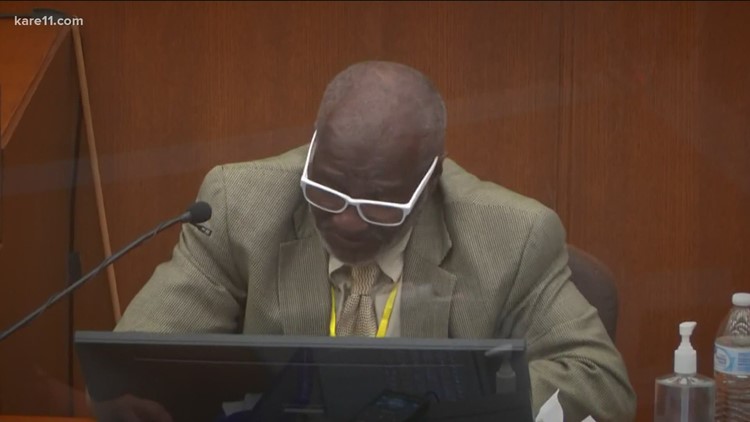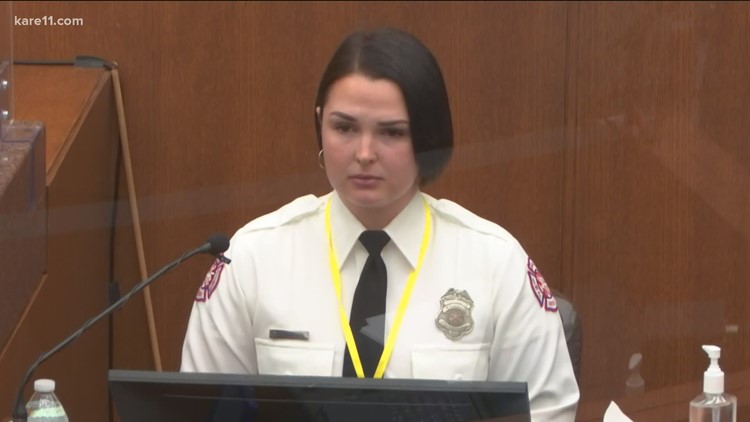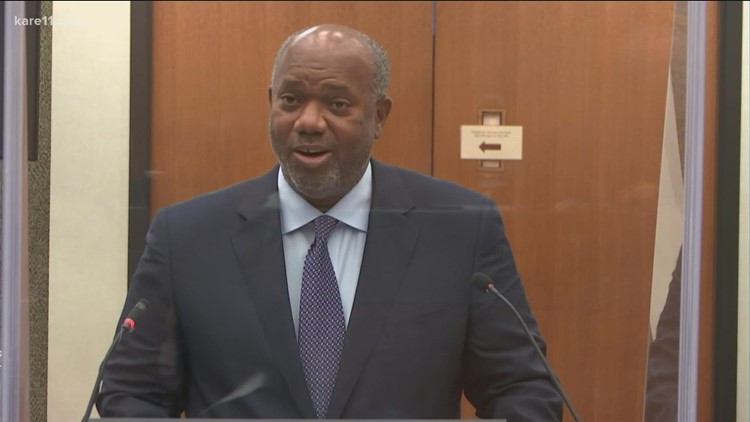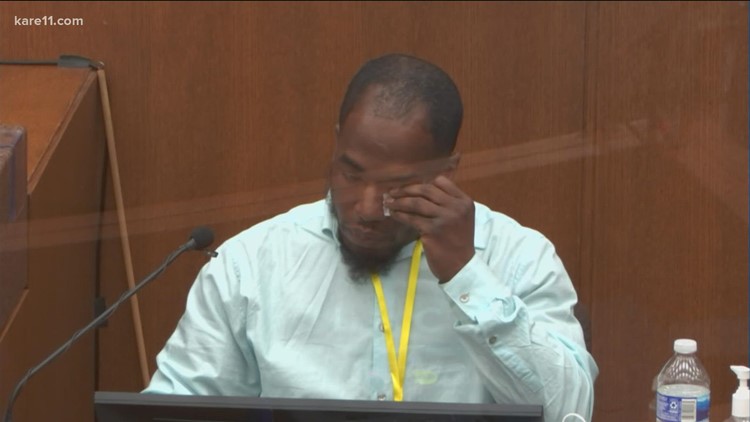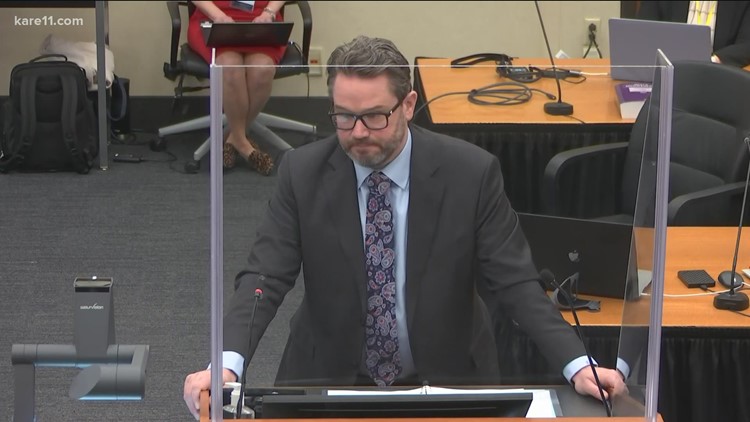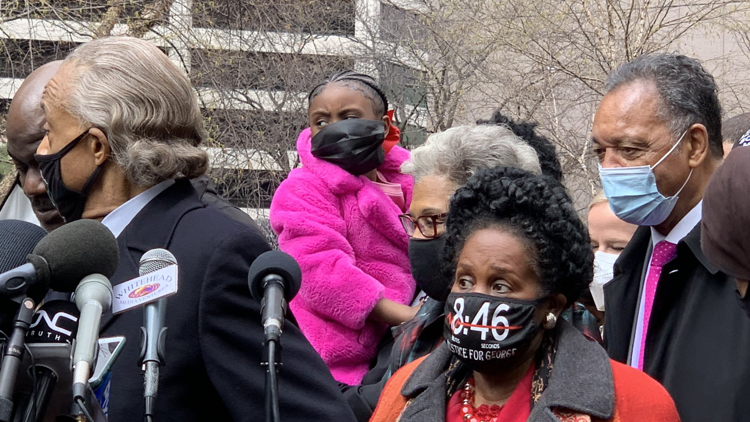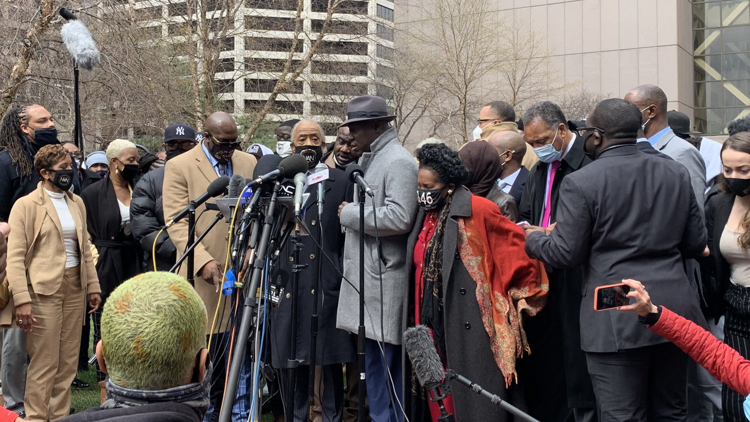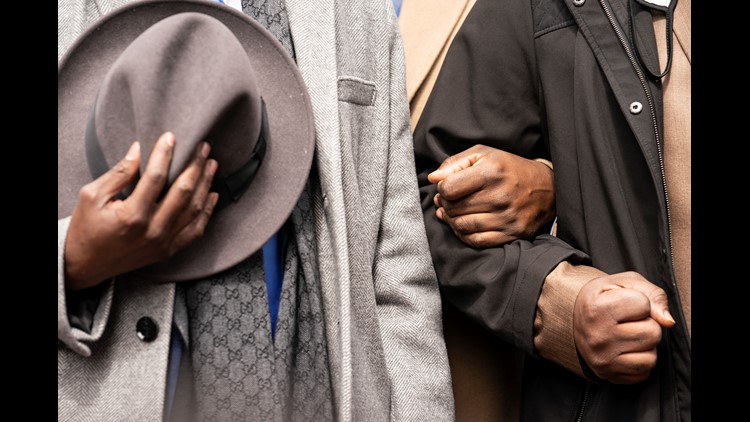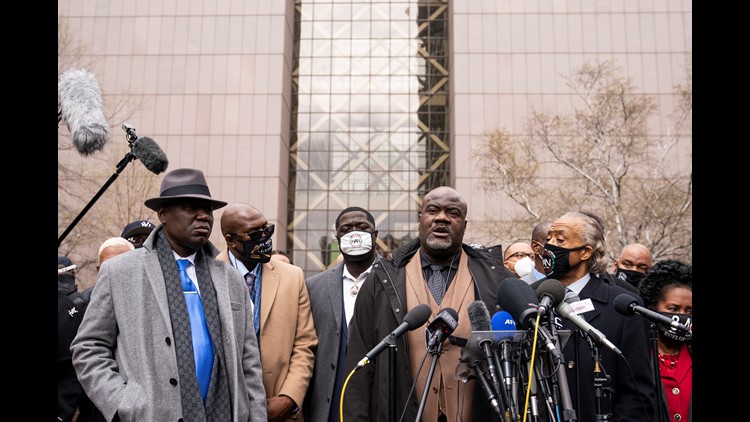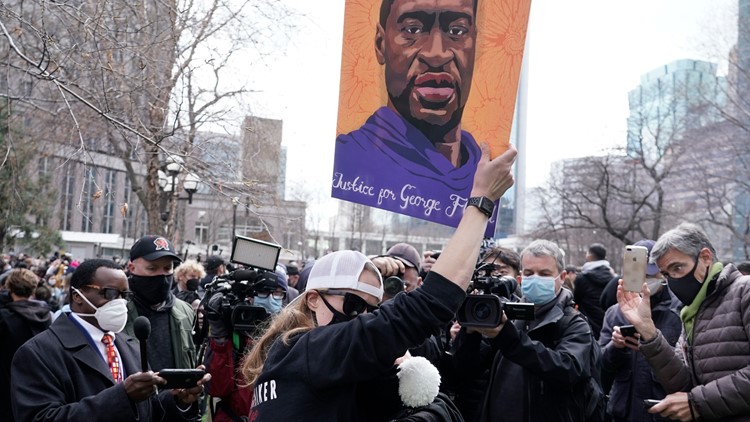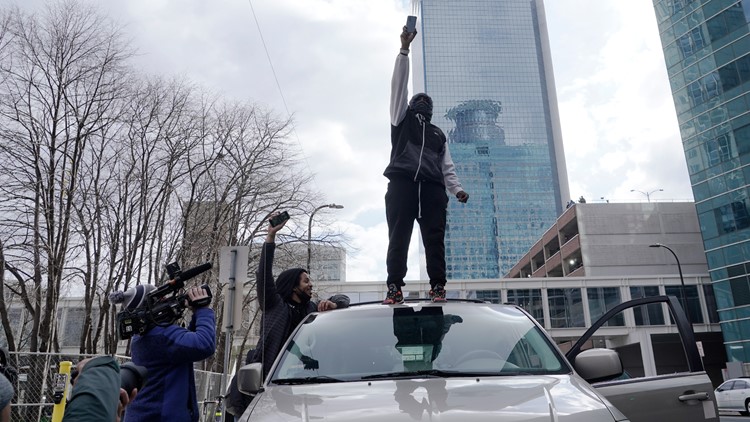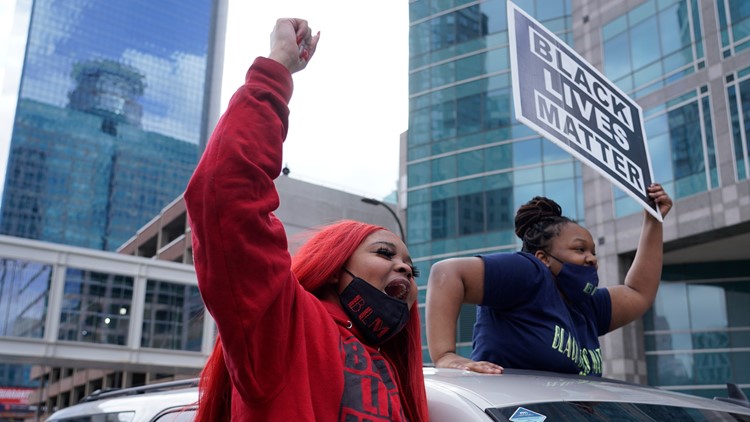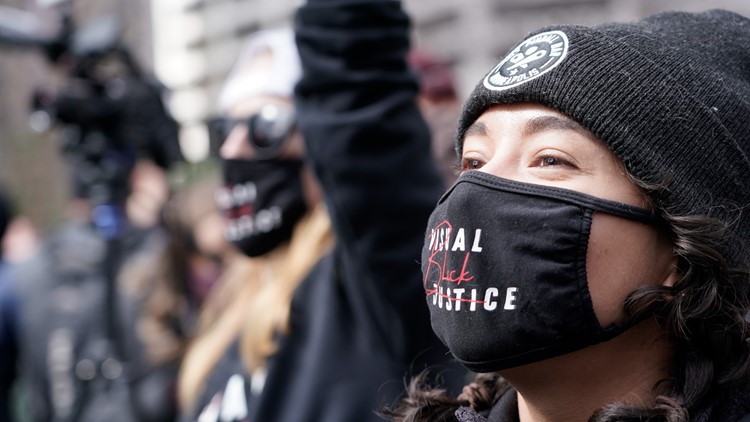MINNEAPOLIS — Editor's note: Some of the images depicted in the video and testimony are graphic. Have a question you'd like to hear our trial experts answer? Send it to lraguse@kare11.com or text it to 763-797-7215.
Thursday, April 1
- Prosecutors played phone call between Minneapolis police sergeant, Chauvin after ambulance left with George Floyd
- Supervisor said Chauvin did not tell him about specific use of force until later at the hospital
- 'There's no reason Minneapolis couldn't have started chest compressions,' paramedic testified about police
- Floyd's girlfriend Courteney Ross took the stand, remembered life with Floyd as an 'adventure'
- Ross shared about opioid addiction in their relationship: 'It's something that we dealt with every day'
- Defense cross-examination revealed that Floyd was hospitalized for an overdose in March 2020
The jury in the Derek Chauvin trial heard from key witnesses for the state Thursday, starting with George Floyd's girlfriend and ending with Chauvin's supervisor.
A former Minneapolis police officer, Chauvin is charged with second-degree murder, second-degree manslaughter and third-degree murder in Floyd's death.
Courteney Ross broke down almost immediately after she took the stand, describing how she met Floyd. She said he asked, "Can I pray with you?" because she was having a bad day. Ross said Floyd was "devastated" when his mother died.
Prosecutor Matthew Frank asked her about opioid addiction, and she told him that both she and Floyd struggled. "We got addicted and tried very hard to break that addiction many times," she said. Upon cross-examination, Ross revealed that Floyd was hospitalized for an overdose in March of 2020.
After Ross testified, two Minneapolis paramedics who responded to 38th and Chicago took the stand. The first one to assess George Floyd while he was still under Derek Chauvin's knee told the prosecutor, "I thought he was dead." He also said on cross-examination that he believed officers could have started chest compressions before he arrived.
Chauvin's police supervisor testified next, a sergeant who responded to the scene where Floyd was arrested. He said that Chauvin did not tell him what force was used - or how long he used it - until later at the hospital, when they went to check on Floyd's condition.
Judge Peter Cahill told jurors Thursday morning that he will give them Friday afternoon off because testimony is going more quickly than expected. It's unclear whether he and the attorneys will still handle legal issues via livestream during that time.
RELATED: George Floyd's girlfriend, Courteney Ross, testifies about their relationship, opioid addiction
LIVE UPDATES
Thursday, April 1
4:45 p.m.
Judge Peter Cahill adjourned for the day, telling the jury they'll attempt to start up again at 9:15 a.m. Friday.
4:15 p.m.
Defense attorney Eric Nelson began cross-examining Sgt. David Pleoger by asking him about the amount of time officers have to notify him when they use force.
Pleoger said an hour or two would be unusual. Nelson asked if it could take more than 10 or 20 minutes, and he said yes.
Nelson asked if officers were required to use the official emergency dispatch, and he said no. They could use a text or phone call.
An officer has to render medical assistance "as soon as is reasonably practical," Nelson read from the policy.
Nelson asked Pleoger if he's ever heard the term "hold for EMS." He said he is not familiar with it. Nelson then proposed scenario where a person has a medical emergency and EMS is on the way. He asked if an officer might decide not to use a hobble or "hog-tie" device and just hold the person instead. Pleoger said yes.
Nelson asked Pleoger to confirm that sometimes police have to do violent things, and that the use of force is not "attractive." He agreed.
Under the MPD's critical thinking model, Nelson asked if officers can consider factors like crowd size and traffic when making decisions. Pleoger said yes.
3:10 p.m.
The state called its fifth witness of the day Thursday afternoon, the Minneapolis police sergeant who was on duty during the arrest and death of George Floyd.
Sgt. David Pleoger recently retired from the Minneapolis Police Department after 27 years with the force.
Pleoger is the sergeant who took a call from dispatcher Jena Scurry, who testified earlier in the week. Scurry wanted to report the officers' use of force against Floyd.
Prosecutor Steve Schleicher asked Pleoger when officers are required to report their use of force to him.
"Any type of force on a handcuffed prisoner," he said.
Schleicher showed the jury a copy of the Minneapolis police use of force policy that was in effect on May 25, 2020, and asked Pleoger some questions about it.
A report is required during a "takedown," Pleoger said, but the supervisor does not have to be notified. When a person is injured, the officers must make a report and notify the supervisor.
Pleoger said in these situations, he goes to the scene and interviews the officers and the person on whom the officers used force. He then has to make his own report.
There is a requirement under policy for the officers to call an ambulance and to render aid while waiting for an ambulance, Pleoger confirmed.
The supervisor has to respond to the scene if a "hobble" or maximal restraint technique is used, as well. The hobble is a "prone position," Pleoger said. Then the officer is required to put them in the "side position" to help them breathe better.
Schleicher asked Pleoger to explain the danger of "positional asphyxia."
"It you restrain somebody or leave them on their chest or stomach for too long then their breathing can become compromised," he said. Pleoger confirmed that's why the policy requires the side recovery position.
"The danger is there without anyone pressing down on them?" Schleicher asked. "Yes," Pleoger responded.
Pleoger said he remembered getting the phone call from Jena Scurry saying she didn't want to be a "snitch," but that she was concerned about something she'd seen on surveillance video.
Sgt. Pleoger said he thought she was potentially just describing a "takedown," which would not require him to visit the scene. He called Chauvin's cell phone at that point, he said.
Schleicher played that call for the jury by showing footage from Chauvin's body camera.
"Yeah I was just gonna call you and have you come out to our scene here," Chauvin can be heard saying. "Not really, but we just had to hold the guy down, he was going crazy ... wouldn't go in the back of the squad."
Chauvin turned his body camera off for the rest of the conversation which Pleoger said was within policy. That policy just changed in early 2021.
Pleoger said he believed Chauvin told him that they had tried to put Floyd in the car, he became combative, and he had injured his nose or his mouth. He said Chauvin told him after holding him down, Floyd suffered a medical emergency and an ambulance was called.
Schleicher asked Pleoger if restraint should stop after the person is no longer resisting, and he said "yeah."
Pleoger said Chauvin did not tell him specifically what type of force was used. When Schleicher asked him if he knew how long the restraint lasted, he said, "No, I didn't have any idea."
Pleoger learned more about the restraint after talking with the other officers, he said. He found out that Floyd had been taken to HCMC and he decided to drive there himself to check on his condition.
Schleicher showed the jury a clip of Pleoger's body camera video from the scene. The sergeant can be heard telling the officers to find witnesses and get their names.
"We can try but they're all pretty hostile," Chauvin can be heard saying.
Pleoger said he went to HCMC and saw staff members working on George Floyd. "I was trying to get a condition update," he said. A nurse told him Floyd was doing "poorly."
Pleoger said he had told Chauvin and Thao to go to HCMC as well. Schleicher showed the jury a photo of the two officers standing in the hallway at the hospital.
The sergeant called a lieutenant, who told him to ask the officers if they'd used any other force.
Pleoger said when he asked Chauvin, "he said he knelt on Floyd or knelt on his neck, something of that nature." Pleoger said that was the first time he'd become aware that force was applied to Floyd's neck. At that time, he said, Chauvin did not tell him how long he applied that pressure.
Pleoger said someone then approached him to tell him that Floyd had died.
"It was deemed a critical incident then," he said.
The judge took a short break to allow the defense and the prosecution to argue about whether Pleoger could offer an opinion on the officers' use of force. The judge agreed to allow one specific question.
"Based on your review of the body-worn camera footage, do you have an opinion as to when the restraint of Mr. Floyd should have ended in this encounter?" Schleicher asked when the jury returned.
"When Mr. Floyd was no longer offering up any kind of resistance to the officers they could have ended the restraint," Pleoger said.
2:10 p.m.
Minneapolis firefighter Jeremy Norton was the fourth witness called by the state on Thursday.
Norton was dispatched to Cup Foods "code 2," which is nonemergency, on May 25, 2020. He said he believes the call said "assist paramedics" and was for a mouth injury. Then the call was elevated to "code 3," he said.
When they arrived, Norton said he went into Cup Foods "looking for a patient."
"The call was confusing because we did not have a lot of information," he said. Norton did not have a patient description, he said, and he could tell that people were upset.
Norton said his partner spoke with an off-duty firefighter, who was "agitated to distraught." That person was Genevieve Hansen, who testified earlier this week.
Norton then spoke with a police officer. "I believe he said, 'The medics left, they need you,'" Norton said. Then he heard over the radio that the paramedics needed assistance.
He said he "inferred" based on what he was hearing that there was a man who had been injured in a "scuffle with the police."
Norton described getting on the ambulance and allowing former officer Thomas Lane to leave. He then helped with lifesaving attempts until they got to HCMC.
Norton told the prosecution that he reported the incident to his supervisors because it appeared someone had died in police custody.
Defense attorney Eric Nelson cross-examined Norton, asking him to clarify some parts of the timeline.
- Initial code 2 call for EMS - 8:20 p.m.
- Upgraded to code 3 - 8:21
- Fire added to call - 8:28
- EMS alerted everyone that they had moved to 36th and Park - 8:31
- Fire truck arrived at Cup Foods - 8:32
- Paramedics asked fire to assist them - 8:33
- Fire truck said it was two minutes away - 8:36
- Norton and fire crew arrived at 36th and Park to help - 8:37
1:30 p.m.
The state called a second Hennepin County paramedic to the stand on Thursday. Derek Smith, like his colleague who testified earlier in the day, responded to 38th and Chicago on May 25, 2020.
Smith was the first paramedic to assess George Floyd when they arrived at the scene. Prosecutor Erin Eldridge asked him what he thought of Floyd's condition at that point.
"In lay terms, I thought he was dead," Smith said. He said he told his partner, "I think he's dead, and I want to move this out of here."
Smith told Eldridge he checked Floyd's carotid artery while officers were still on top of him.
"In a living person, there should be a pulse there," he said.
Smith said he removed the handcuffs from Floyd's wrists before beginning lifesaving measures. He checked for a pulse once again and did not find one.
He asked officer Thomas Lane, who rode along in the ambulance, to start chest compressions.
Smith said he called the fire department for backup "code 3," because he needed more help to handle the cardiac arrest.
"There's a lot to be done in a little bit of time," he said. "I'm only human."
Eldridge asked Smith about his final efforts to save Floyd with a shock.
"Yes he's a human being and I was trying to give him a second chance at life," he said. He confirmed that the shock did not improve Floyd's condition.
Smith said when they arrived at the hospital Floyd was "still deceased." The defense attorney objected to that answer but the judge overruled him.
The defense cross-examined Smith after the prosecution finished their questions.
Defense attorney Eric Nelson asked Smith if it's common to use a thumb or fingers to feel for a pulse. "Generally fingers," Smith said.
Nelson showed Smith a photo of the moment he checked for Floyd's pulse. "You were able to feel for his pulse while officer Chauvin's knee was in that place?"
"Yes, sir," Smith answered.
Nelson asked if Smith eventually brought his partner in to help instead of Lane, because the police officer was not an EMT.
"Any layperson can do chest compressions," he said. "There's no reason Minneapolis couldn't have started chest compressions."
11:20 a.m.
The second witness called by the prosecution Thursday was a Minneapolis paramedic.
Seth Zachary Bravinder responded to 38th and Chicago on May 25, 2020, originally for a routine report of someone with a "mouth injury." Bravinder said routine means "no lights or sirens." "It would be pretty low criticality," he said. "No life-threatening indication if we're going code 2."
About a minute and a half later it was upgraded to code 3, he said. That would mean an emergency response.
"There were multiple officers on top of the patient when we pulled up at that point," he said. "I assumed that there was potentially some struggle still because they were still on top of him."
From a distance, he said he could not see any signs of consciousness.
Bravinder said there was a crowd of people that "appeared very upset" so the ambulance drove away from the scene to get an "optimum environment" to start resuscitation. They drove to 36th and Park Avenue, a few blocks away.
Prosecutor Erin Eldridge showed video of Floyd being carried onto the ambulance. She then showed a clip of bystander video that shows Bravinder approaching Chauvin and making a gesture with his hand.
He said he needed Chauvin to move "so we could move the patient."
Bravinder said Floyd was in "asystole," a severe form of cardiac arrest where the heart is not pumping blood. He said that is "not a good sign" for resuscitation.
Eldridge had Bravinder talk through the resuscitation efforts as the jury saw photos of Floyd laying unresponsive in the ambulance.
Eldridge asked if resuscitation should be started right after someone does not find a pulse.
"As soon as we can, yes," Bravinder said. "The primary goal I would say is circulating blood through chest compressions."
"What happens if there's a delay?" Eldridge asked.
"Based on my understanding that's not good for his outcome," he said.
Defense attorney Eric Nelson cross-examined paramedic Seth Bravinder Thursday just after noon. Nelson began by asking Bravinder questions about his training as a paramedic.
Bravinder said he has been a paramedic since 2013, and has been with Hennepin County for four years. He said he frequently goes on calls where police are involved, and has responded to scenes where officers are on top of someone or where a suspect has struggled with police.
Eldridge questioned Bravinder again upon redirect, asking if Floyd was "struggling or violent in any way" when he got to the scene. He said no.
"Did it appear to you that he was already dead when you got there?" Eldridge asked.
"I wouldn't know when I pulled up on scene," he said. "But I didn't see him moving or breathing."
10:25 a.m.
Prosecutor Matthew Frank asked Courteney Ross several questions upon redirect, asking about Floyd's condition after consuming opioids prior to May 25, 2020.
Ross said Floyd was OK after taking pills that had a "different" effect in March. She said he was also acting normal after taking the pills he bought in May about a week before his death.
"He was playing football, hanging out, eating, just a normal day," she said.
The judge ordered a 20-minute break when the defense declined to ask any more questions.
9:55 a.m.
Defense attorney Eric Nelson began his cross-examination of Courteney Ross by asking her about the opioid addiction with which she and Floyd struggled.
She said that there were times one of them was using, but not the other. Floyd had gone through treatment programs, Ross confirmed.
Nelson asked about the timeframe of January 2020 to Floyd's death in May.
"I know that this is difficult and I'm sorry we have to go through this," Nelson said.
He asked Ross about buying opiates from Morries Hall, the friend who was with Floyd the day he died. She confirmed that Hall sometimes sold to them.
Nelson also asked about an "extended hospital stay" for Floyd on March 6, 2020.
Ross said she picked Floyd up to take him to work but "he wasn't feeling good, his stomach really hurt, he was doubled over in pain, just wasn't feeling well and he said he had to go to the hospital."
Ross took him to the ER and she had to get home to her son, so she left. Ross later learned that was due to an overdose, she said.
Nelson asked if she knew that Floyd had taken heroin at that time, and she said no.
Then Nelson asked Ross about some pills she and Floyd purchased around that time, which she said they did not buy from Hall. She said she could not remember if they bought them before or after the overdose.
"They looked different to me than a normal pill," she said. "They seemed thicker."
She told Nelson that they were not uniform in size, and had markings on them. Ross said she and Floyd both took them, and they had a different effect on her from previous pills.
"Usually an opioid to me is like a pain reliever, it's something that's kind of relaxing," she said. These pills were "a really strong stimulant, I couldn't sleep all night. I felt very jittery."
Nelson asked Ross if Floyd spent time with Morries Hall from time to time, and she said yes. Nelson asked her to confirm that she didn't like it when they were together.
"I didn't like Morries very much, no," she said.
Nelson referred to a statement Ross made to law enforcement last year, where she said Floyd purchased controlled substances from Hall. She said "I did say yes, but I did not see it with my own eyes."
Nelson asked if the pills that "kept (Ross) up all night" were still around from March through May, and she said she didn't know.
She said she had a "similar experience" about a week before Floyd died, but didn't know if they were the same pills. Nelson said she told law enforcement that the pills made her feel like she was going to die. She said she did not remember saying that.
About a week before Floyd's death, Nelson asked Ross if they bought more pills from Hall. She said she didn't see it happen but she believed it was Hall.
Ross told Nelson that Floyd was clean after the hospital stay, and about two weeks before his death "I noticed a change in his behavior."
9:25 a.m.
Thursday's testimony began with Courteney Ross, George Floyd's girlfriend.
She broke down crying early on, describing how she met Floyd. She said she was having a hard day and he offered to pray with her.
She said they had their first kiss in the lobby of the Salvation Army, where Floyd worked as a security guard. She remained in a relationship with him until his death.
Ross said since Floyd was new to the Twin Cities, he helped make the city feel new to her, as well. She said he lived near Bde Maka Ska.
"We liked to go down there a lot and enjoy the outdoors," she said. "We liked to go to the sculpture garden and, excuse me," Ross became emotional. "Walk around."
She said Floyd worked as head of security at Conga Latin Bistro.
Ross said they separated briefly at the beginning of 2020, but "from March until May we spent every day together."
Prosecutor Matthew Frank showed Ross a now famous photo of Floyd wearing a black sweater. She cried when she saw it.
"I would call it a 'dad selfie,'" she said, then laughing, because she said often dads do not have the best angles on their photos.
Ross said the death of Floyd's mother impacted him deeply.
"He seemed kind of like a shell of himself, like he was broken," she said. "He seemed so sad. He didn't have the same kind of bounce that he'd had. He was, he was devastated. He loved his mom so much, and I knew that. He talked about her all the time."
Frank asked Ross if drug use was a part of their relationship. She said they both suffered with opioid addiction, stemming from prescription drugs for chronic pain.
"We got addicted and tried very hard to break that addiction many times," she said.
Ross said they worked together trying to break their addictions. "It's something that we dealt with every day," she said. "It's not something that just kind of comes and goes. It's something I'll deal with forever."
She said there were "absolutely" times they were both not using opioids.
Ross said they would get opioids "off the street, on the black market" when they couldn't get them through a prescription.
She said Floyd would take oxycotin or oxycodone and swallow them in pill form.
In March of 2020, she said she fell back into using, and she and Floyd were both using together. However, she said there was a long period when she believed they had both quit. In May of 2020, she told Frank that she suspected Floyd was using again.
"Just behavior changes in Floyd," she said. Ross said that one time in May, she used again.
Ross said she spoke to Floyd by phone the day before he died. He told her he was staying at a friend's house that night. She said he was feeling "lonely" and a lot of his friends were out of work.
Frank asked Ross if Floyd was physically active and she said he was "very active."
"Floyd liked to work out every day," she said. "He lifted weights that are far beyond anything I could lift every single day. He did sit-ups, push-ups, pull-ups."
She said he loved running, biking and playing sports. She said he never complained of any shortness of breath, but did have sports injuries in his neck and lower back.
Those injuries led to his opiate prescriptions, Ross said.
She told Frank that Floyd had a positive COVID test sometime in late March.
Wednesday, March 31
Nineteen-year-old Cup Foods employee Christopher Martin said that Floyd appeared to be high when he was in the store that night.
Floyd's drug use is expected to be a key part of Chauvin's defense. Attorney Mike Bryant, who offered commentary on the trial for KARE 11, said he believes the prosecution is taking the approach of acknowledging the drug use early on rather than letting the defense introduce it later.
The jury also heard testimony from 61-year-old Charles McMillian, a bystander who lived in the neighborhood and witnessed the entire interaction between police and George Floyd. He can be heard on video telling Floyd, "You can't win." He told the prosecution he felt "helpless" watching the body camera footage.
McMillian broke down in tears recounting that day, prompting Judge Peter Cahill to call a short break in court.
The jury also saw body camera footage, not yet viewed publicly, of Chauvin speaking to McMillian after Floyd was carried away. "We've got to control this guy because he's a sizable guy," Chauvin said.
The prosecution played never-before-seen footage from Derek Chauvin's body camera. It was brief, however, because his camera fell off shortly after he arrived. It had been previously reported that Chauvin's camera fell off during the arrest.
On Wednesday, prosecutors also showed the jury surveillance video of Floyd walking around Cup Foods at the corner of 38th and Chicago Avenue in Minneapolis in the last moments before he died.
At the end of the day the jury saw a lengthy succession of body camera videos from former officers Thomas Lane, J. Alexander Kueng and Tou Thao, showing Floyd's detainment and cries of "I can't breathe" from three different angles. They also saw a new piece of video: A short sequence from Chauvin's camera before it fell off during the arrest.
RELATED: Derek Chauvin trial: Jury sees new video of George Floyd before arrest, Derek Chauvin afterward

